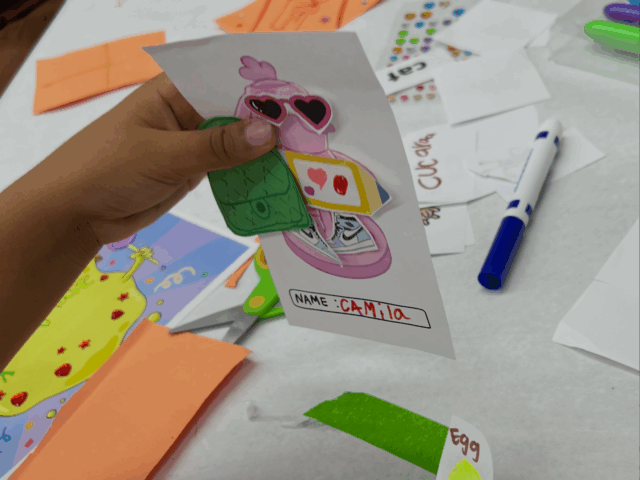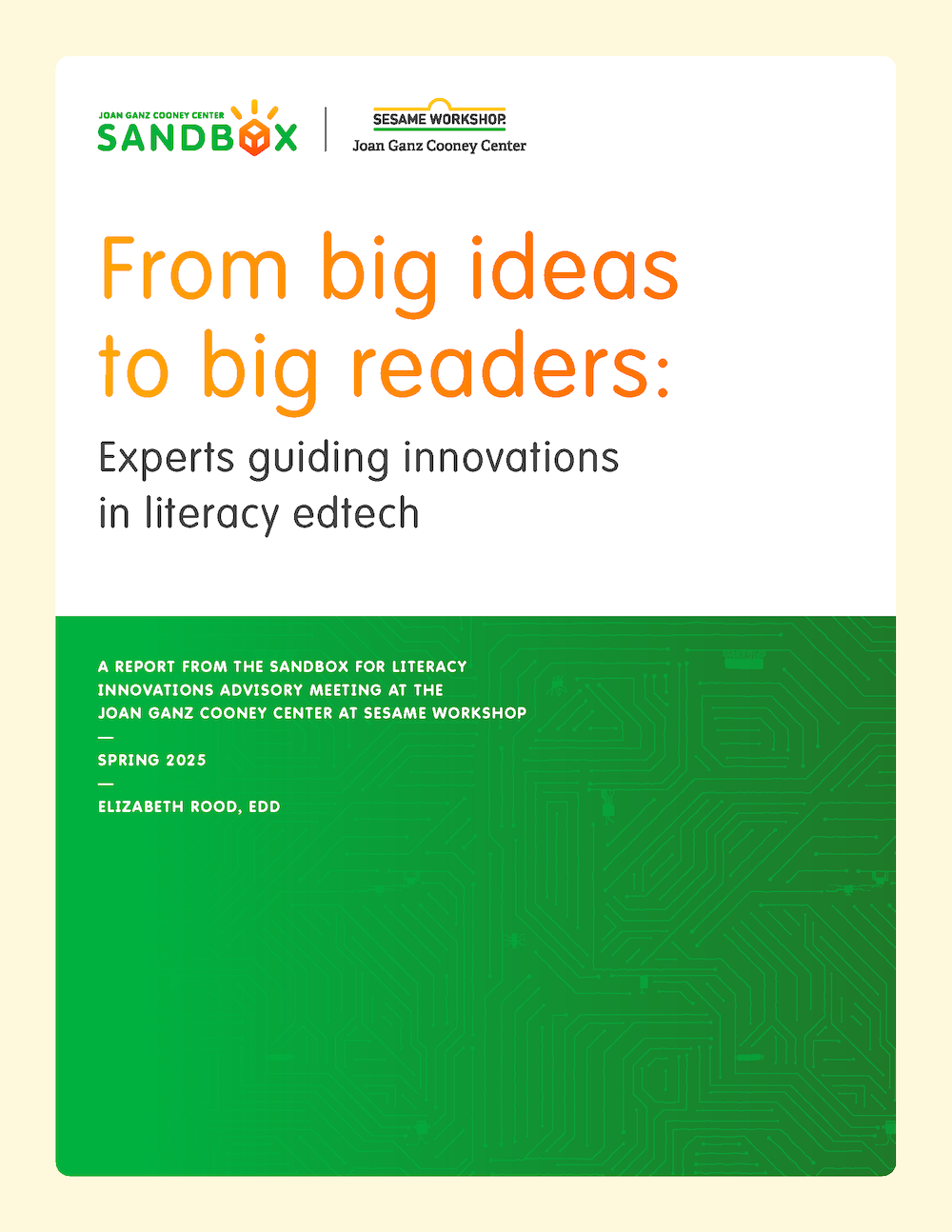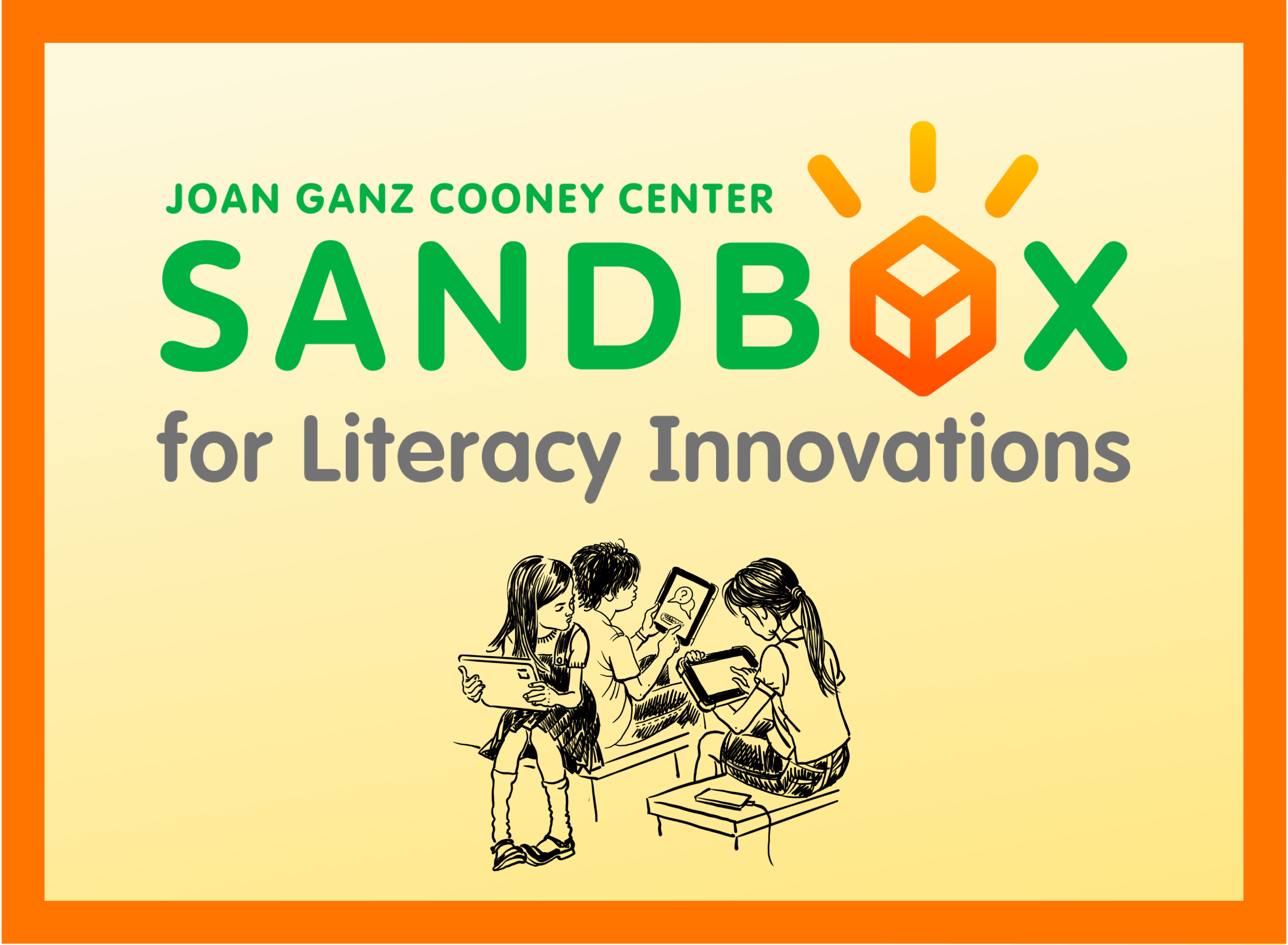One morning last August, about half a dozen 10-year-olds gathered in a New York City studio with the product team from Lirvana Labs, a partner in the Cooney Center Sandbox for Literacy Innovations. This was their third day of co-designing a new AI writing companion in sessions facilitated by The GIANT Room, an organization that promotes kid-centered learning innovation
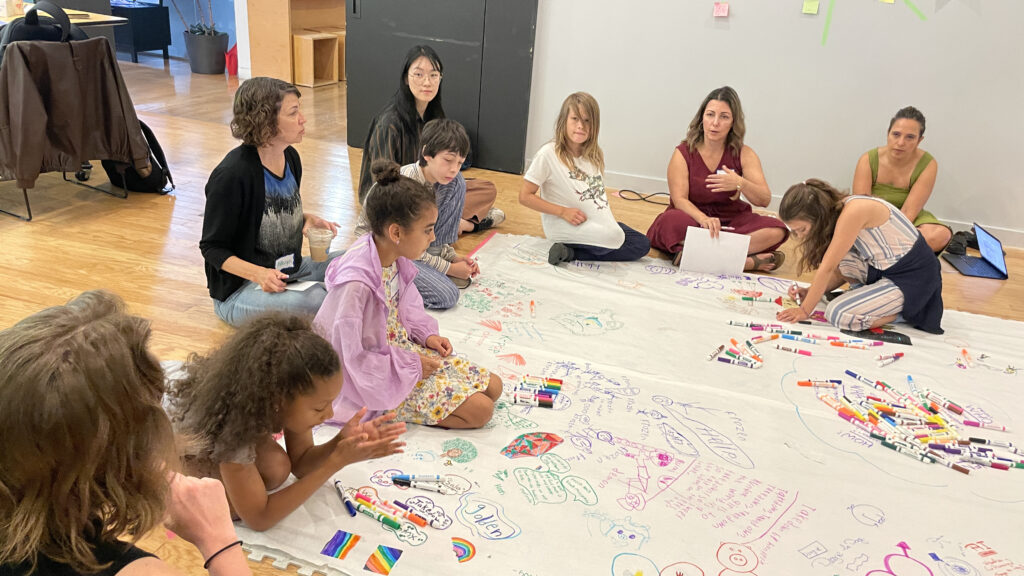
Gradually, the kids and adults took a seat on the floor, circling the edges of a massive paper square filled with thoughts on how, when, and from whom the kids wanted feedback on their writing, written in multicolored markers. The paper was full of doodled notions of large-language model (LLM) agent avatars, including several animals, a dancing robot, and an anime superhero rocketing across the page. Papers scattered on the nearby tables contained additional brainstorms. Sticky notes were plastered across the wall, offering more ideas about planning, drafting, revising, and editing writing. As a whole, the studio space looked like it had been hit by an idea tornado.
It wasn’t an unusual scene for the co-design sessions conducted with partners in the Cooney Center Sandbox. Beyond playtesting edtech for final pre-market tweaks, co-design is a structured effort to partner with kids at the earliest stages of product development. Things get messy. In Lirvana Lab’s case, the product team hoped the unique insights of kids could help design an LLM agent that not only dispenses high-quality, timely writing assistance, but also taps into an elusive sentiment for student writers—the motivation to seek out feedback and revise early drafts. The key to that motivation was fostering the connections between kids and their AI writing companions that could infuse the revision process with what Lirvana Lab’s Head of Product, Dan Lee, called “a sense of play.”
Over the three co-design sessions, one of the biggest insights Lee and his team distilled from the storm of scribbled ideas was that the LLM agent features that fostered those connections with students needed to be as personalized as the writing instruction it provided.
“What adults think is fun is not what kids think is fun.” said Lee. “On the team developing this product, we have experts in literacy, experts in learning, and experts in technology. Well, kids are the experts in fun. They are the ones who know what will engage them.”
The Power of Personalization
Lirvana Labs is an edtech startup that launched in 2023, and their flagship product is Yeti Confetti Kids, an AI-powered personalized learning and teaching “co-pilot” that helps with early numeracy and literacy. When the company decided to expand its offerings to include an AI writing companion, they knew it would be a challenge.
Writing tools are a relative rarity in literacy edtech. Not only is writing a more complicated learning task than early literacy skills, but older students are also inherently more skeptical of AI-enabled agents trying to teach them something.
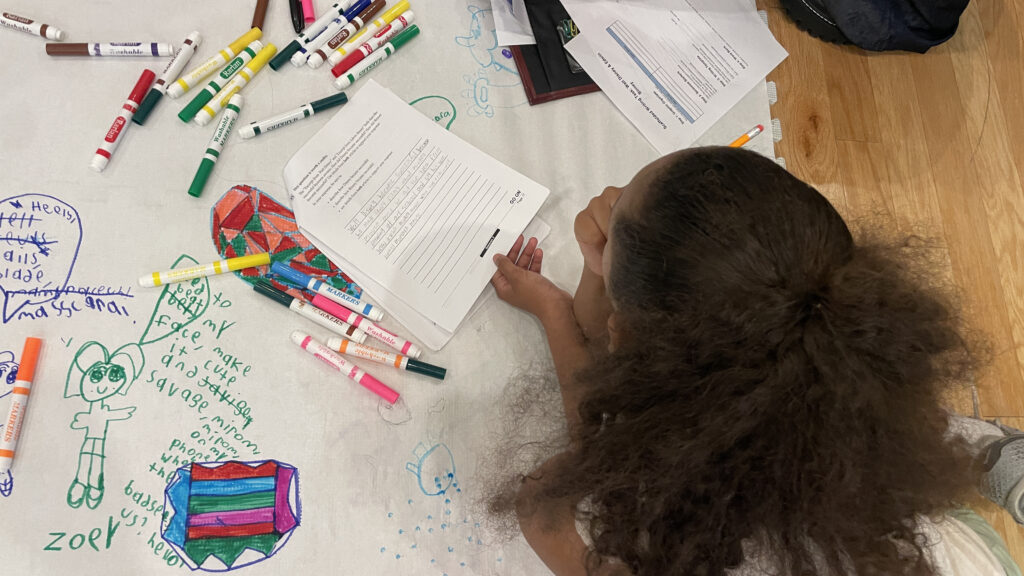
On the first day of co-design, each kid drafted a short essay based on two readings from a New York State standardized test, with the help of Lirvana Lab’s prototype writing companion, Doogie the Dog. They wrote their essays on paper, while conversing with Doogie about the prompt, how to plan and structure the writing, and what examples from the reading were appropriate to include. Despite the kid-friendly character, frustrations with Doogie, who spoke like a California surfer, soon emerged.
“He was a little too engaging,” said Lirvana Lab’s Head of Educator Experience and GTM Operations, Jeannie Kim. Doogie kept interrupting and asking the writers the same questions repeatedly. Plus, despite the surfer dude voice, “Doogie’s personality was a little dry,” Lee admitted. “There was no whimsy or fun to it. I heard the word bot a lot from the kids.”
The Lirvana Labs team took this feedback and made some immediate changes to Doogie before the next day’s co-design session. To give the kids a laugh, they gave Doogie a fun little bark to signal that he was about to talk. They also made him a little less eager.
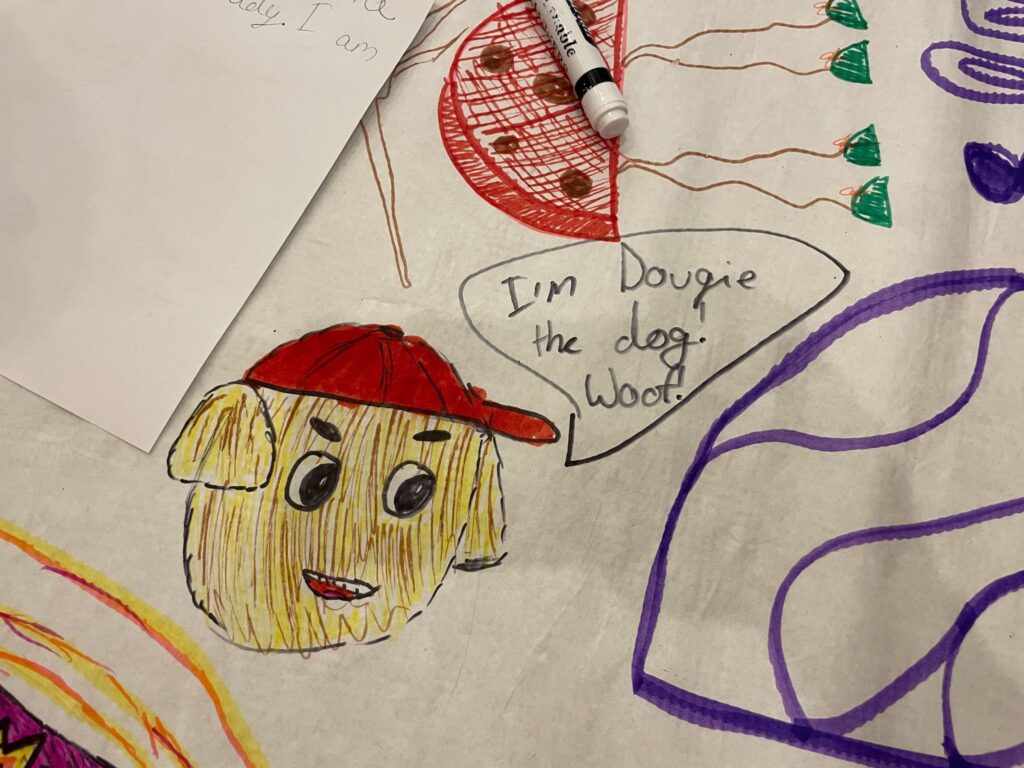
“We took away some things. Like, don’t give kids feedback on their syntax and grammar when they’re still just trying to figure out their main ideas and topic sentences,” said Lee.
Even bigger changes to the learning companion followed at the second co-design session, which began with this question of the day: How do you like to receive feedback on your writing? The answers were so varied that the Lirvana team soon realized that Doogie couldn’t do it all.
“I remember one of the students I was working with that day just started to design their own AI buddy,” recalled Lirvana Lab’s Senior Designer, Sarah Sung. “It was just so intuitive. She was like, “I know exactly what I want.’”
Forging Connection and Motivation
On day three, the co-designers made the writing companions more personalized. They discussed how much students and the writing companions should know about each other. At the very least, the kids wanted their writing buddies to know their names and be familiar with their previous writing. But they also wanted introductory small talk about things like favorite activities and foods. Some suggested that learning companions should ask students about their mood and energy levels and set the tone of their feedback accordingly. Others wanted the ability to pause or mute the writing buddy, to allow some quiet time to think or take a break before re-engaging for more feedback.
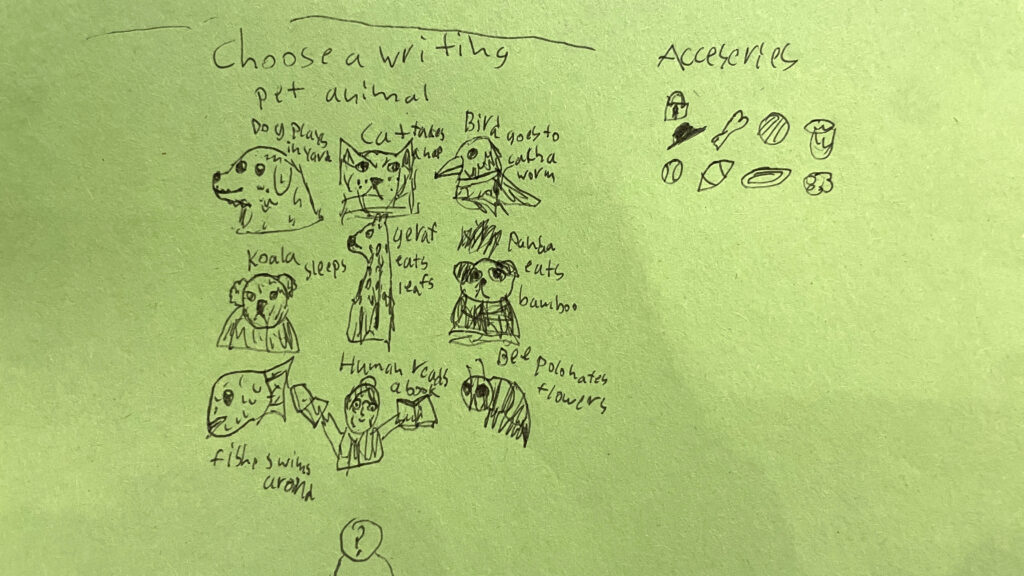
Working in small groups, the co-designers sketched and scribbled ideas on construction paper. They proposed several personalities for the writing companion, ranging from a sarcastic jokester to a calm, fluffy cloud that changed shape just for fun.
Importantly, while the kids craved a connection with their writing buddies, they also knew they were engaging with computer code that had no real thoughts or feelings. Like many kids on the verge of adolescence, they occasionally tried to test the AI to see how it reacted to impossible commands, outlandish statements, and insults. Instead of a scolding, this behavior elicited another co-design challenge for the group. Specifically, how should LLM agents deal with inappropriate language or other misbehavior—Set the expectations upfront? Pause the session for a short period? Summon a teacher?
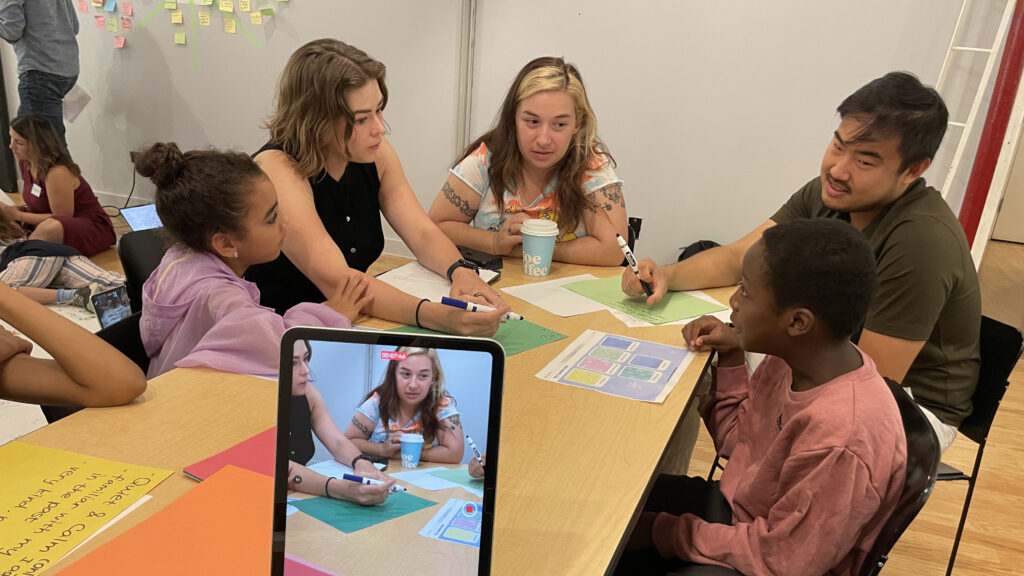
“I think that’s something we wouldn’t have found without co-design, because there were no chatbots around when we were kids,” said Sung. “We don’t know what it’s like to grow up with that kind of technology, where you know it’s a bot, but you also know it’s capable of so much.”
Along the same lines, engaging a writing companion like Doogie could make the revision process fun for kids, but impressing human readers was still a core motivation for the young writers. One big idea to emerge from the sessions was that the software should allow students to share their writing with classmates and perhaps include a digital bulletin board for teachers to display exemplary work.
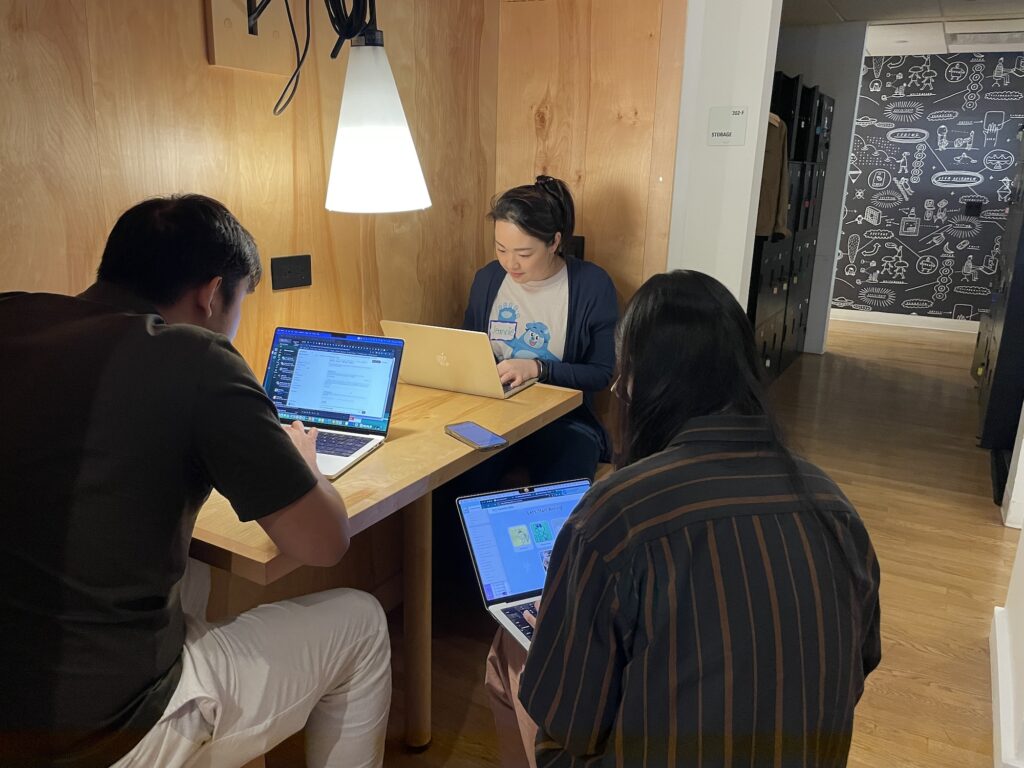
“We are a deep technology company, and we can iterate software really fast,” said Lee, “We tried to take a few key ideas to create something concrete.”
For the final 20 minutes of the session, kids spread out and tested the new and improved writing companions. The studio space was suddenly filled with disembodied voices—some peppy and encouraging and others cracking jokes—asking the young writers if they could include more details to illustrate their assertions, compose better topic sentences, and correct errors. Soon, the adults in the room were handing out pencils so the kids could continue revising their essays.
“For me, that was a very empowering moment,” said Lee. Not only were the young writers eager to engage with feedback on their essays, but also experiencing their design ideas brought to life was a lesson in the power and purpose of revision. The changes they’d suggested weren’t disappearing into the ether; they were incorporated into a real product.
“It was definitely motivating for them,” said Lee. “You could tell that their levels of engagement were increasing from day one to three, because they knew their feedback was being taken seriously.”
